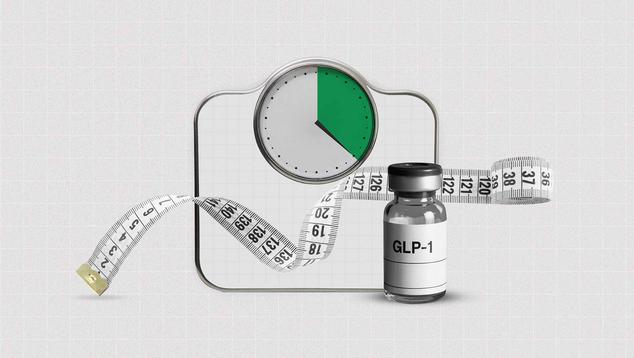WASHINGTON, D.C. — After peaking at a record high of 39.9% in 2022, the U.S. adult obesity rate has gradually declined to 37.0% in 2025. This is a statistically meaningful decrease representing an estimated 7.6 million fewer obese adults compared with three years ago. Meanwhile, diagnoses of diabetes — a lifetime disease that can be managed but not cured — have now reached an all-time high of 13.8%. Both metrics are part of the ongoing Gallup National Health and Well-Being Index.
Gallup calculates obesity using the federal standard of having a BMI of 30 or higher, while the diabetes rate includes both those with Type 1 and Type 2 diabetes. This is based on a question that asks U.S. adults, “Has a doctor or nurse ever told you that you have diabetes?”
The most recent results are based on combined data from three nationally representative surveys of 16,946 U.S. adults interviewed by web in the first three quarters of 2025 using the probability-based Gallup Panel. Gallup uses respondents’ self-reported height and weight to calculate body mass index (BMI) and subsequent weight classes. A “vanity effect” in how respondents present themselves may explain why Gallup’s obesity estimates are typically somewhat lower than those obtained from studies that use randomized clinical measurements. However, because Gallup’s method of collecting self-reported weight and height has been consistent, the trend still provides valuable information regarding changes over time.
Being obese corresponds with a higher rate of having diabetes across all age groups. Still, not all individuals who are obese will develop diabetes, and some who are of a healthy weight will nevertheless get the disease. Factors other than obesity status or age could increase the risk of developing diabetes, including physical inactivity, race and ethnicity, and genetic predisposition. As diabetes is a lifetime disease, short-term reductions in the obesity rate would not be expected to curtail the percentage of Americans who have been diagnosed with it.
Use of Weight Loss Injectables Has Risen Sharply Since Early 2024
Over the past year, more Americans have turned to Type 2 antidiabetic GLP-1 drugs such as semaglutide (brand names Ozempic and Wegovy) for weight loss purposes. The percentage of adults who report taking this class of medicine specifically for weight loss has increased to 12.4%, compared with 5.8% in February 2024 when Gallup first measured it. Usage among women (15.2%) continues to outpace men (9.7%), but both groups have more than doubled their use in the past year. These results dovetail with increased awareness of the drugs used for weight loss, which has risen from 80% to 89% nationally in the same period.
In line with the higher proportion of women who take weight loss injections, the obesity rate for women has come down slightly more than the rate for men since 2022. The rate among men has dropped 2.3 percentage points to 35.2% in 2025, while women's rate has dropped 3.5 points to 38.8%.
Semaglutide was approved by the FDA for weight loss in 2021, while liraglutide (brand name Saxenda) was approved in 2014. Among those who have been diagnosed with diabetes, 14.1% report using these drugs for weight loss purposes, slightly higher than the general adult population.
Use of Weight Loss Injectables Aligns With Weight Loss Across Age Groups
Amid increased use of GLP-1 injectables for weight loss, obesity rates have been coming down for most age groups since 2022. The biggest reduction in obesity is found among those aged 40 to 49 and those aged 50 to 64, which are also the age groups with the greatest current rates of usage of GLP-1 injectables for weight loss purposes and the greatest increases in use of those injectables since the first quarter of 2024.
- The obesity rate among those aged 40 to 49 has come down 4.3 points, falling to 43.3% alongside the current 16.2% rate of GLP-1 usage.
- Those aged 50 to 64 have seen their obesity rate drop 5.0 points to 42.8%, with 17.0% currently reporting use of the medicine.
- The youngest adults and seniors are essentially unchanged in their obesity rates, while the rate has fallen 2.2 points among 30- to 39-year-olds.
Gallup did not measure use of GLP-1s for weight loss in 2022 or 2023, but available data via the Well-Being Index are consistent with reports of steadily increasing use since the initial FDA approval in 2021.
Those aged 65 and older have the third-highest rate of reported usage of GLP-1 drugs for weight loss (11.1%) and in increased usage since the first quarter of 2024 (6.5 points) among the five age groups but (as noted above) show no reduction in obesity since 2022. Prior Gallup research, however, has indicated a significant reduction in reports of the effectiveness of the GLP-1 injections for weight loss among these older Americans compared with younger age groups.
Implications
Obesity has climbed in the U.S. since Gallup began ongoing measurement in 2008, increasing over 14 percentage points to 39.9% by 2022 amid wide-ranging declines in physical health over the course of the COVID-19 pandemic. Despite the recent decline, U.S. obesity rates continue to exceed many Western countries, perhaps buttressing domestic efforts to make semaglutide more accessible. Currently, 13 states fully cover GLP-1s for obesity treatment under Medicaid, and legislative efforts continue to target expanded coverage. Expanding access to these treatments may be an important factor in determining whether the current decline in obesity becomes a lasting trend, since despite recent declines the U.S. obesity rate remains very high by historical standards.
With nearly nine in 10 Americans now aware of these weight loss drugs, the 12.4% of U.S. adults using GLP-1 injectables demonstrates how quickly semaglutide and related drugs have entered the public health sphere. According to Pew Research Center, more than half of American adults (53%) say that weight loss drugs are good options for people with obesity or weight-related health conditions. Still, not all stigma has faded: 62% of U.S. adults say semaglutide is not a good option for people who do not have a weight-related health condition.
The growing popularity of GLP-1s has led to healthier BMI scores but has not lessened the rate of diabetes diagnoses, which is a lifetime diagnosis. Only if the rate of new diabetes cases starts to decline will the U.S. rate eventually follow. (Although the approval of the monoclonal antibody teplizumab in 2022, which has recently shown promise as a potential cure for Type 1 diabetes, could cut the rate among all age groups.) As such, while GLP-1s support weight management, they should not be considered a cure-all for overall health or other disease states. Prior Gallup research, however, does show that previous users of GLP-1s report somewhat lower rates of obesity-related chronic conditions than do current users, suggesting that GLP-1s can play a modest role in reducing disease burden generally over longer periods.
Genetic factors, too, cannot be overlooked. In terms of Type 2 diabetes, which accounts for over 90% of adult cases of diabetes, some people are more susceptible due to inherited risk. But healthy habits like eating fruits and vegetables and getting adequate physical activity can enhance the benefits of these medications. Gallup’s data from 2023 suggest that U.S. adults have worse health habits and outcomes than they did just four years earlier in 2019. Sustained health progress will likely depend not only on medical innovation but also on rebuilding healthier daily routines that complement pharmacological treatments.
Stay up to date with the latest insights by following @Gallup on X and on Instagram.
Learn more about how the Gallup National Health and Well-Being Index works. Learn more about how the Gallup Panel works.




